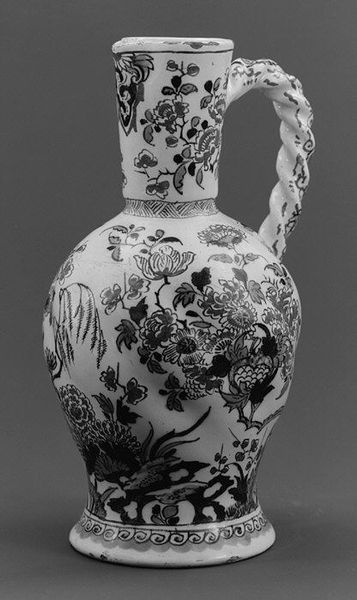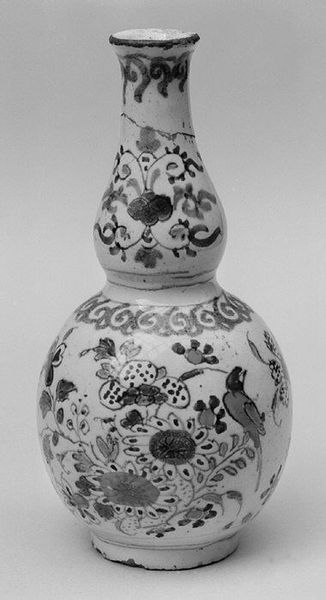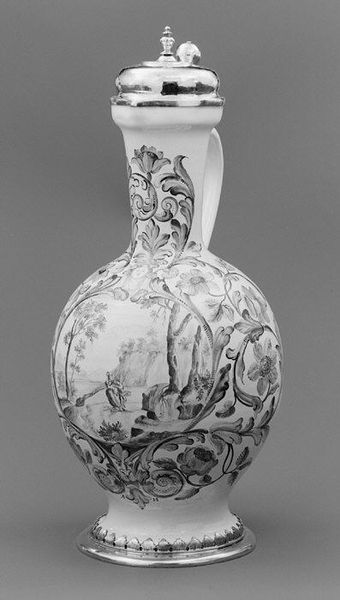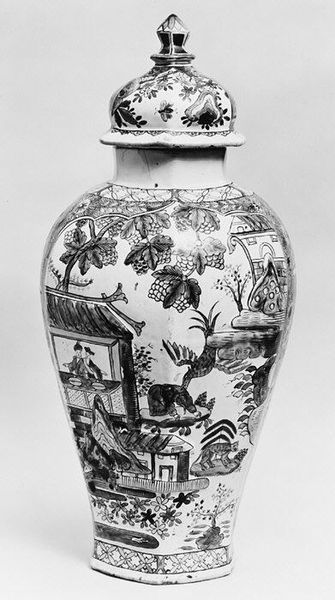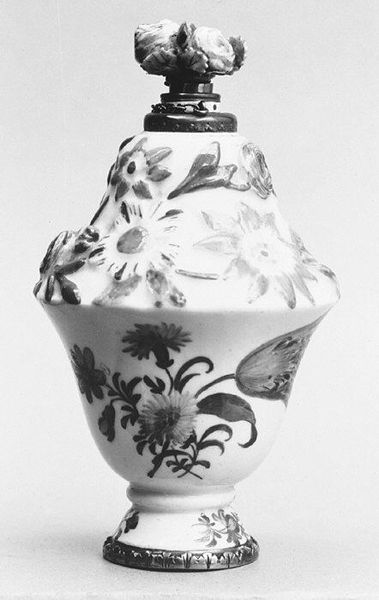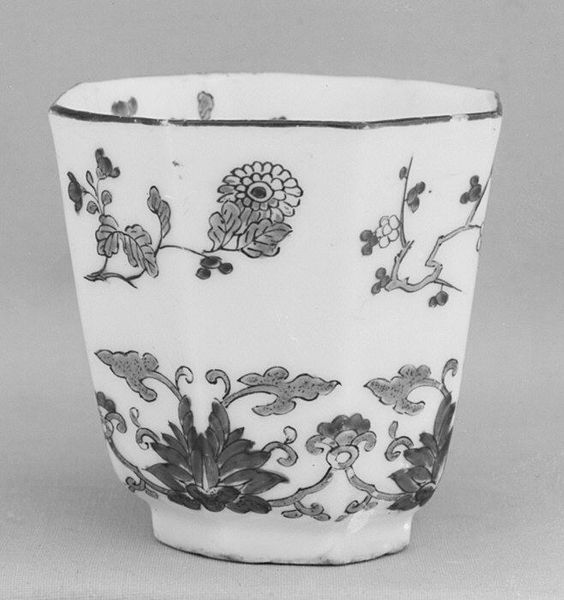
ceramic, porcelain, sculpture
#
baroque
#
asian-art
#
ceramic
#
jewelry design
#
porcelain
#
stoneware
#
geometric
#
sculpture
#
ceramic
#
decorative-art
Dimensions: Height (with cover): 16 1/2 in. (41.9 cm)
Copyright: Public Domain
This vase with cover was made by the Meissen Manufactory in the 18th century. At the time porcelain was known as ‘white gold’ because Europeans hadn’t yet discovered how to make it. The process was a fiercely guarded secret in China. Augustus the Strong, King of Poland, was determined to unlock this secret. When he discovered the formula, it led to the establishment of the Meissen Manufactory. Originally the designs were heavily influenced by Chinese and Japanese porcelain. The flowers are painted in the Kakiemon style which originated in Japan. These objects acted as a conduit of cultural exchange, revealing how aesthetics and techniques moved across continents. This vase represents cultural appropriation, yet its beauty obscures the economic and political power dynamics at play. What does it mean when one culture adopts and adapts the artistic traditions of another, especially in the context of colonialism and trade?
Comments
No comments
Be the first to comment and join the conversation on the ultimate creative platform.
